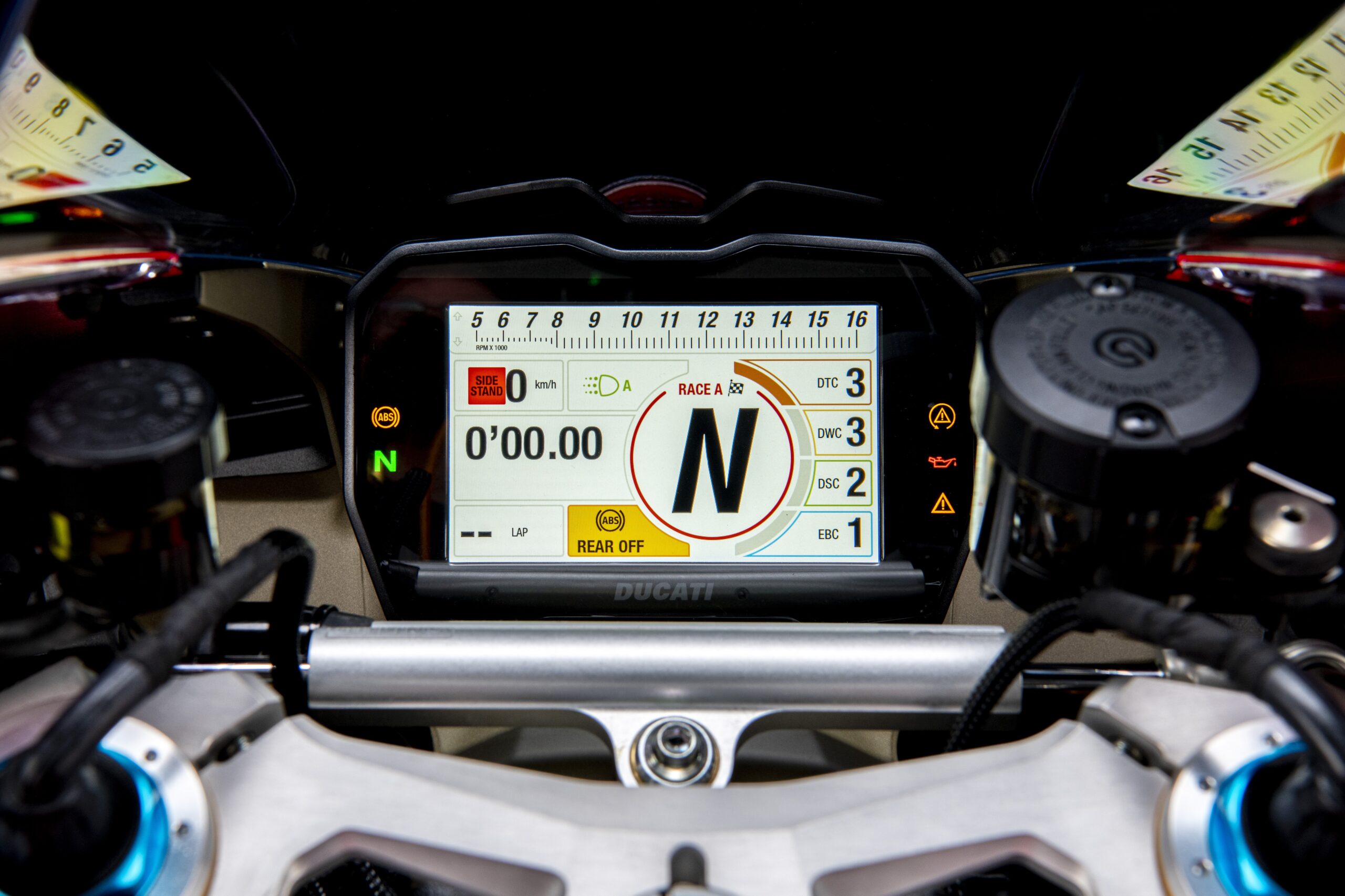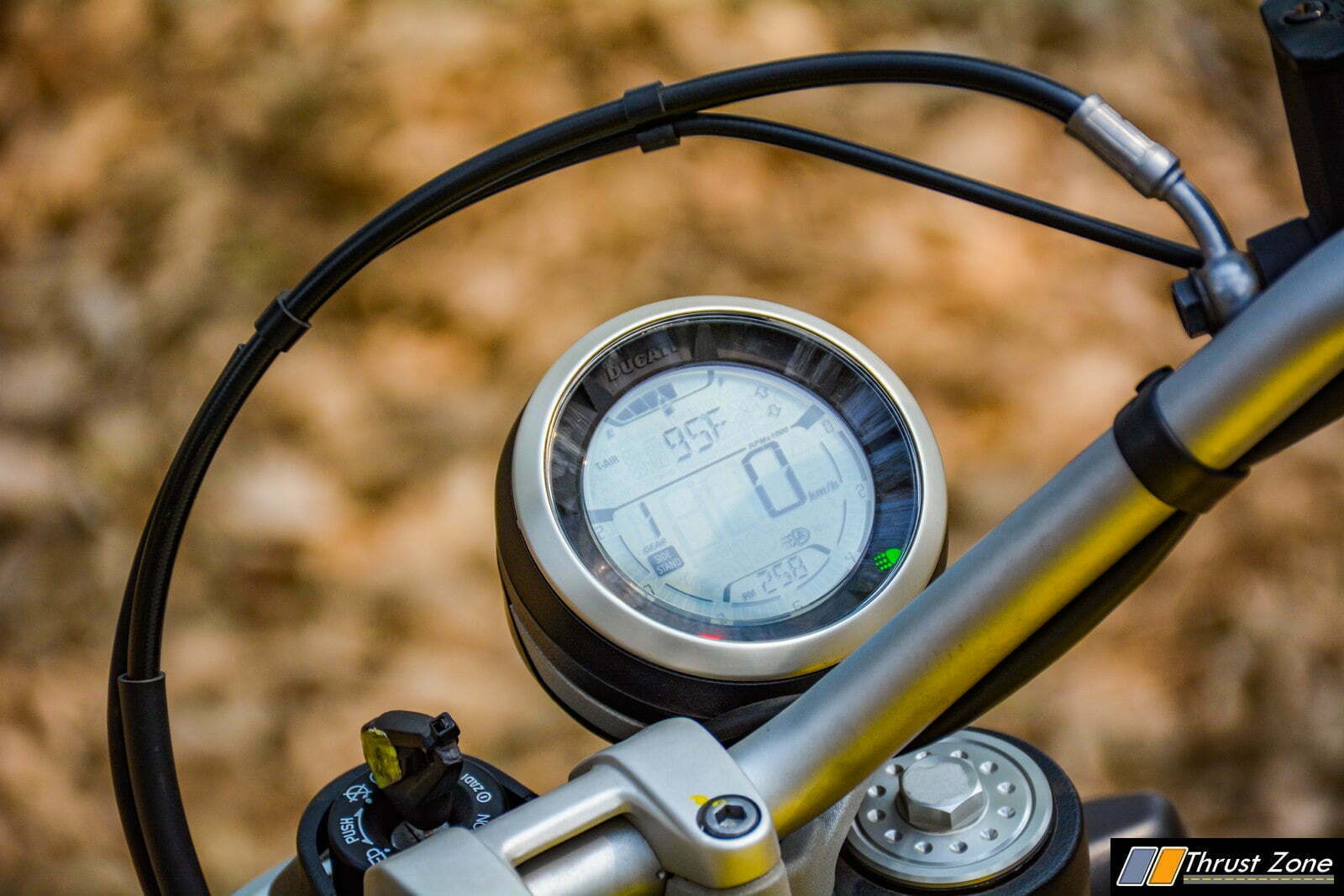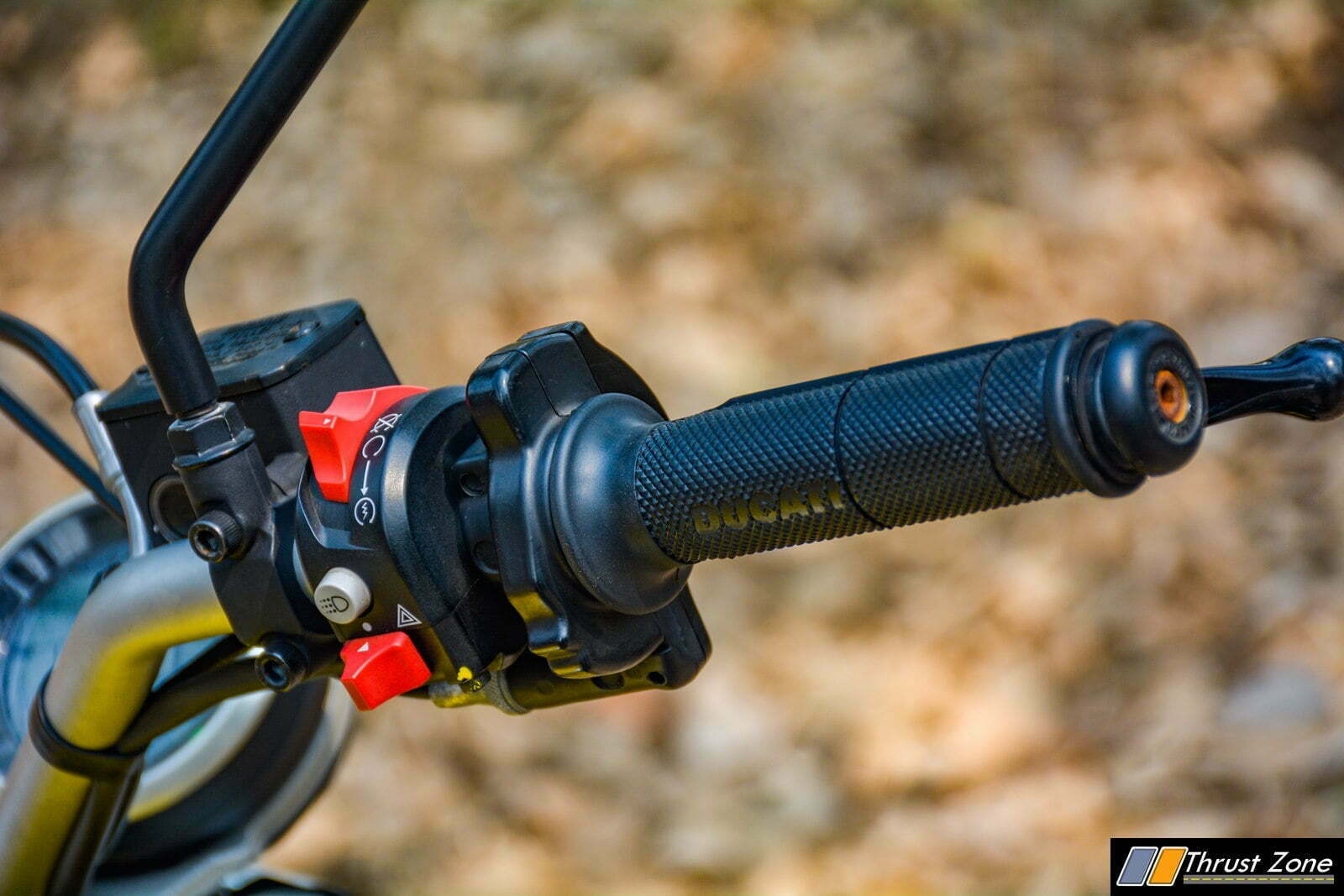Every Ducati is a magical mix of beauty and technology. A unique balance that the Bologna-based company has been able to build up over the years, combining attention to design with the constant work of R&D in the field of innovation. From the Multistrada V4 to the Scrambler, passing through the Panigale V4, each model is designed to offer Ducatisti only the best, thanks to sophisticated solutions capable of giving them unforgettable experiences every time they are on the bike. In this sense, electronics play a fundamental role, and it is for this reason that, especially in the last 15 years, Ducati has invested daily in the development of cutting-edge technologies.
The electronic solutions make it possible to refine the character of each bike according to the intended use: whether it is to enable the best performance on the track with the Panigale V4 or to provide the most comfortable and exciting journey possible with the Multistrada V4.
In 2008, with the 1098R, Ducati was the first motorcycle manufacturer to introduce Traction Control on a motorcycle, moving the performance and safety benchmarks of super sports bikes forward. Just one year later, the LED headlight introduced on the Streetfighter 1100 represented another Ducati world first. In 2010, Ducati presented the first motorcycle in the world capable of “changing character” thanks to the presence of the Riding Modes: the Multistrada 1200 S. Other electronic innovations introduced by Ducati include the TFT instrumentation of the Diavel, in 2011, another example of a technical solution that has now become a standard on motorcycles in every segment. In 2012, the 1199 Panigale, which received the prestigious design award, the Compasso d’Oro, saw the introduction in the motorcycle field of the Full-LED light cluster and electronic engine brake management.
Since safety is a very important aspect for Ducati, in 2014 the Bologna-based company, together with Dainese, introduced the first motorcycle with an integrated system capable of communicating with the airbag in the jacket: the Multistrada 1200 Touring D|Air. At the time, airbag systems did not guarantee current safety standards, while the sophisticated Multistrada 1200 Touring D|Air system sent the activation signal in just 20 milliseconds in the event of a crash or slide. In 2018 Ducati introduced the Slide By Brake system that allows controlled power sliding under braking on the Panigale V4, while in 2020, with the Multistrada V4, Ducati was the first motorcycle manufacturer to introduce radars to the world of two wheels, which allowed the implementation of the Adaptive Cruise Control and Blind Spot Detection systems. 2023 saw the arrival of extended deactivation on the Multistrada V4 Rally, a sophisticated system which, by switching off the two rear cylinders, reduces fuel consumption and heat. These are the innovations introduced by Ducati in the world of two wheels, many of which are now standard on motorcycles “over 500 cc”.
In addition to working to introduce new technical solutions to the market, Ducati R&D works every day to evolve and perfect existing bikes, improving them year after year. This is what happened, for example, with Multistrada V4 owners, who received the Minimum Preload and Easy Lift systems free of charge when they were introduced on later models, and who continue to benefit from navigation system upgrades. Or the evolution that the Panigale V4 has undergone from 2018 to today.
Creating safe, high-performance and accessible motorcycles is the basis of the development of every Ducati, which thanks to all these innovations and the continuous development of solutions already on the market, today offers a range in which each model represents a technological benchmark in the segment to which it belongs, also in terms of safety, given that all Ducati motorcycles are equipped as standard with ABS Cornering and Traction Control.
Ducati’s approach is to develop internally the technologies to be introduced on its motorcycles, together with its suppliers, simultaneously creating know-how within the Company. Concrete examples are the close collaboration with Pirelli, Brembo, Bosch and other suppliers with which the Bologna-based manufacturer participates in the development of components which are first mounted on the Ducati bikes. This approach is even more valuable when it comes to electronics because it allows Ducati to have full control over the technologies implemented, thus being able to customize them without constraints depending on the application, from the Panigale V4 to the Scrambler via the Streetfighter, Diavel, DesertX and the Multistrada V4, which represents the maximum expression of Ducati electronic technology.
Electrical & Electronic Systems: development and creation of expertise
The drive towards innovation in electronics goes hand in hand with the growth of the Electrical & Electronic Systems department, which has seen its resources quadruple in just over ten years. Through the work of this department, which is part of R&D, Ducati studies, develops and introduces new and often innovative systems into series production, obviously also drawing on experience from racing competition. The constant work of developing and refining the technical and technological solutions has introduced a very broad range of functions and devices across the entire range, which today varies from the state-of-the-art available on the Panigale V4 and Multistrada V4, to systems such as Ride-by-wire, Traction Control, Quickshift, Riding Mode, Cornering ABS and TFT instruments also on more accessible models such as the Scrambler.
Ducati innovation also involves new working methods. In addition to developing new technologies internally, Ducati has had several internal laboratories within the company for several years to carry out tests during the development phase, without necessarily having to rely on external resources or suppliers. One of these is Electrical & Electronic Testing which is responsible for testing the electrical and electronic components of the bikes in the range, putting them to the test to measure their quality and duration over time. The purpose of this activity is twofold: to quickly solve the problems that may arise during the development phases and to monitor the quality of the already existing models.
Among the tests that are carried out by highly specialized personnel in the Electrical & Electronic Testing laboratory there are those for verifying the functioning of the components in extreme thermal and environmental conditions, made possible thanks to the use of cells capable of replicating temperatures ranging from –40°C to 180°C and atmospheric events such as heavy rain or salt mist. The components are also put under stress by means of robots which repeat operations thousands of times, such as, for example, the rotation of the handlebar to check the correct reliability of the wiring, or other operations such as the brake lever to turn on the brake light, in order to verify its resilience in real conditions of use.
Furthermore, inside the laboratory, we go as far as controlling each individual chip, even by sectioning them to analyse them under a microscope and verify their exact composition and consistency with the development specifications.
Software debugging and mobile app activities are also carried out within Electrical & Electronic Testing. Over the years, connectivity is also becoming an increasingly important aspect in the motorcycle field and, given the growing number of smartphone manufacturers and the constant updating of the various operating systems, the presence of a group of people within the Company who deal with this aspect represents an added value to always keep up with the times. An example of this work can be found in navigation systems: from the Phone Mirroring solution adopted on the Multistrada V4, which makes it possible to transform the dashboard into a colour map navigator containing all the information required for riding the motorbike, to the Turn-by-Turn system which was introduced in 2023 on the DesertX and Diavel V4. These two solutions allow Ducati not to be bound to a specific operating system but allow compatibility with iOS and Android systems and the continuous evolution of the software which is then updated free of charge for customers.
All of this is “the Ducati way”. A working methodology that has allowed Ducati to create increasingly innovative products with improved quality year after year, testifying to how the strategic commitments of the Bologna-based manufacturer, from racing competition to R&D, passing through investments in experimentation, are aimed, year after year, at giving Ducatisti the bikes of their dreams.
Innovations introduced by Ducati as world firsts:
• 2008, DTC Traction Control – 1098 R
• 2009, LED headlight – Streetfighter 1100
• 2010, Riding Modes – Multistrada 1200 S
• 2011, TFT instrumentation – Diavel
• 2012, Electronic Engine Brake Management (EBC) and full-LED headlight – Panigale 1199
• 2021, Adaptive Cruise Control/Blind Spot Detection – Multistrada V4
• 2023, Extended Deactivation – Multistrada V4 Rally





